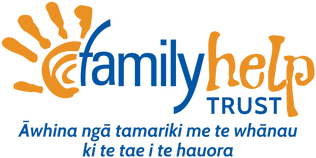RESOURCES
What Makes the FHT Home Visiting Programme a Success (2015)
Selecting Interventions to reduce family violence and child abuse in New Zealand. ESR September 2014
A report to the Glenn Inquiry: Dr Jeff Foote, Dr Annabel Taylor, Dr Sue Carswell, Graeme Nicholas et al read the full report here. FHT features on pages 5 and 6.
Traumatic Brain Injury Among Mothers Identified as Having a High Risk of Child Maltreatment (2014)
Audrey McKinley, Cora van Vliet-Ruissen & Annabel Taylor. Journal of Family Violence: Vol 29: Number 4 read the full report here
Igniting Change: Moving Away from Violence (Jan 2013)
A joint research project conducted by Christchurch Women's Refuge, Family Help Trust and Te Awatea Violence Research Centre (University of Canterbury) Funded by a Lotteries Community Research Grant. Lead Researcher Yvonne Crichton-Hill. Read the full report here
Family help trust child protection policy (updated 2021)
Our child protection policy supports our staff to respond appropriately to potential child protection concerns, including suspected abuse or neglect. It is our organisation’s commitment to protect children from abuse and to recognise the key role all our staff has in protecting children.
The process for responding to a concern about a child is on page 13 of this policy.
The interests of the child will be the paramount consideration when any action is taken in response to suspected abuse or neglect.
Download and read the full report
The process for responding to a concern about a child is on page 13 of this policy.
The interests of the child will be the paramount consideration when any action is taken in response to suspected abuse or neglect.
Download and read the full report
ImpactLab Good Measure Report (March 2021)
Below is the forward to the report by Sir Bill English, Impact Lab Chairman. It explains what ImpactLab does and why we thought it essential to commission the report:
I had the privilege in public life to work with people who understood the need for positive change in the lives of those around them and worked hard to achieve it.
Our social services do a tremendous job of bringing positive change to our most deserving individuals and communities. These organisations are built by volunteers and community workers who dedicate their lives to helping others.
Social service workers can see the positive impact of their work. Children thriving, families united, jobseekers in new employment and people empowered to change their life course.
With more tools they could do more good. I want to help them by finding ways to make sure that effort is recognised, results are measurable and they can make decisions about how to do more good.
ImpactLab grew from a desire to make available to community organisations tools that use the power of public information and the latest technology, so these organisations can change more lives.
By measuring social change and positive outcomes, ImpactLab enables charities and social service providers to speak the language of funders, investors and governments.
It has been a pleasure to work with Family Help Trust to learn how this organisation changes lives throughout Christchurch, New Zealand.
Calculating social value helps inform decision making and investment and enables you to do good, better.
You can read the full report here Family Help Trust Impact Lab Provider Report
Intensive Intervention ( JULY 2019)
Intensive Intervention: Exploring long-term outcomes for clients referred from Oranga Tamariki to Family Help Trust
In 2019 Oranga Tamariki and Family Help Trust decided research was needed to ensure the families referred by Oranga Tamariki to take part in our intensive intervention programme were receiving the support they needed to succeed.
Click the link below to read the report.
Oranga Tamariki and Family Help Trust Research
In 2019 Oranga Tamariki and Family Help Trust decided research was needed to ensure the families referred by Oranga Tamariki to take part in our intensive intervention programme were receiving the support they needed to succeed.
Click the link below to read the report.
Oranga Tamariki and Family Help Trust Research
